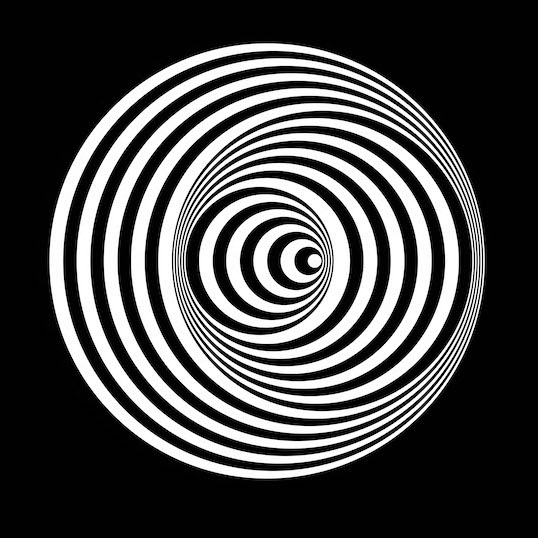
CARPE
“Centre for the Study of Perception and Art” (CArPe)
Welcome to the home page of the Centre for the Study of Perception and Art (CArPe)
CARPE aims to integrate the activities of different groups of researchers in Padova (Psychology of art; History of art; Creativity studies; Music; Comparative psychology; Art in therapy and well-being, Preference formation; Neuroaesthetics; Film studies and more) , also in collaboration with public and private bodies, and scientific associations with converging interests.
Dum loquimur, fugerit invida aetas: carpe diem quam minimum credula postero.
Orazio (Carmina I)

Marina Apollonio, Dinamica circolare 6Bø30, 1966-2019, smalto su legno con meccanismo rotante, 40x40 cm. Collezione privata.
Marina Apollonio (Trieste, 1940, resident in Padua since 1969) is one of the greatest exponents of optical-kinetic artistic research. Her work focuses on the perceptive effects that certain geometric shapes induce on the user. The language of Dinamica circolare underlies a bipolar principle, expressed both at a structural level (black-white, corner-curve) and at a higher level: the rational rigor that governs the entire composition contrasts with the sense of " vertigo” that rotation causes in the observer.
Historical note about research on these phenomena
Vittorio Benussi had given Cerare Musatti the stereokinetic effect as a subject for research. Certain stimuli, when rotated, produce a 3D illusion. Musatti will publish the first scientific report on this phenomenon in 1924 (Musatti C.L. (1924) Sui fenomeni stereocineti. Archivio Italiano di Psicologia, 3, 105-120). Independently from the work in Padova, the French artist Marcel Duchamp (1887-1968) incorporated this phenomenon in his work already in 1935, using the term "rotorelief".





